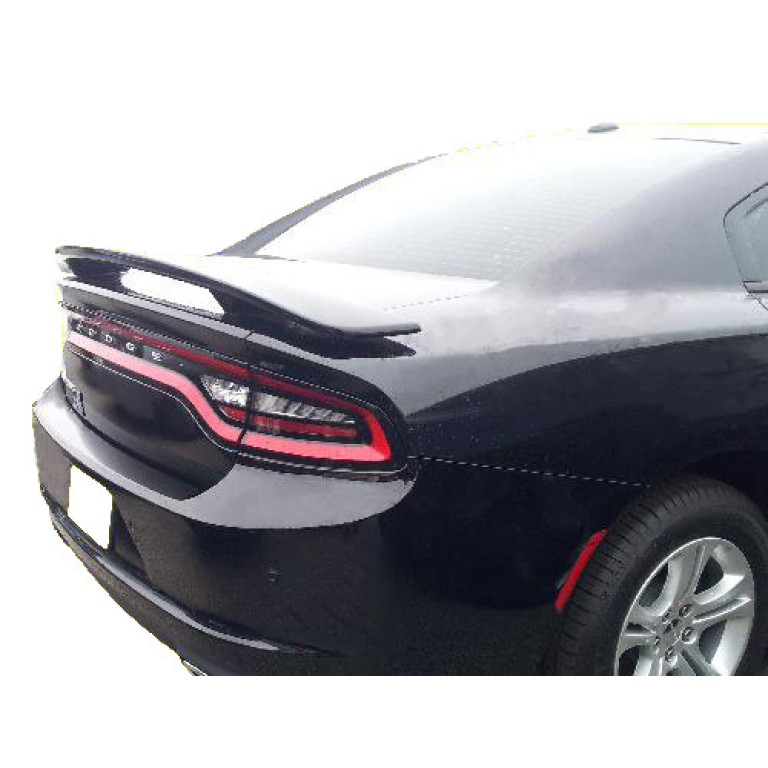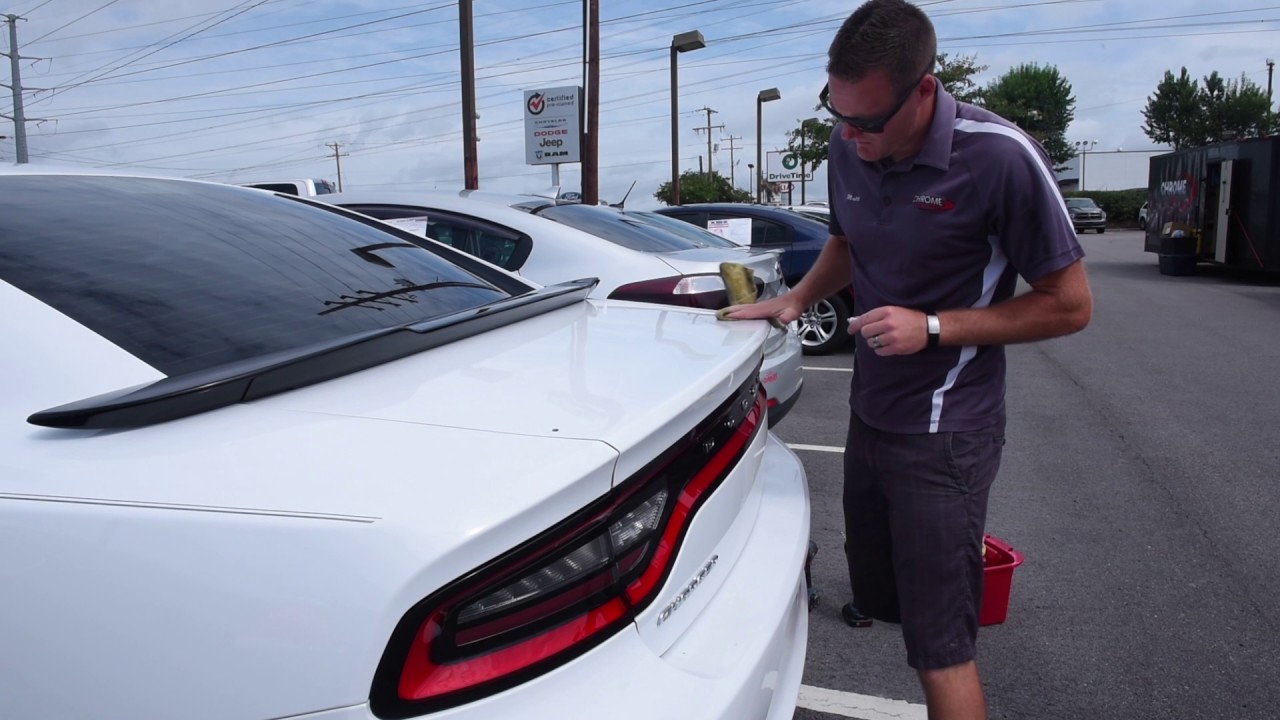There are a few things you need to know before you install a spoiler on your Dodge Charger. You need to know what kind of spoiler you want, where you want it placed, and how to secure it. You also need to be aware of the potential hazards involved in installing a spoiler.
This article will provide step-by-step instructions on how to install a spoiler on your Dodge Charger safely and correctly.
- Park your Dodge Charger in a well-lit area and set the emergency brake
- Locate the screws or bolts holding the trunk liner in place along the back edge of the trunk lid
- These may be hidden behind plastic plugs
- Remove the screws or bolts and carefully pull back the trunk liner to expose the spoiler brackets beneath
- Affix the spoiler to the brackets using the provided hardware, then replace and secure the trunk liner

Credit: directcartoys.com
Can You Install a Spoiler by Yourself?
No, you cannot install a spoiler by yourself. Spoilers are installed during the manufacturing process and are not intended to be user-installed.
How Do You Put a Spoiler on a 2015 Dodge Charger?
Adding a spoiler to your 2015 Dodge Charger will give it an aggressive, sporty look. It’s a relatively simple process that can be completed in a few hours. Here’s what you’ll need to do:
1. Remove the two bolts that hold the trunk liner in place. You’ll find these bolts near the taillights.
2. Carefully remove the trunk liner and set it aside.
3. Locate the mounting points for the spoiler on the underside of the trunk lid. There should be four holes – two on each side.
4. Place the spoiler onto the trunk lid, aligning it with the mounting points.
Use a pencil or marker to trace around the edges of the spoiler so you know where to drill holes for mounting screws.
5. Drill pilot holes into the traced outline, then remove the spoiler and set it aside again. This step is important – drilling pilot holes first will prevent cracking or splitting when you screw in larger screws later on.
6 . Countersink each of your pilot holes slightly so that your mounting screws will sit flush with or below the surface of the Spoiler material when installed..
this will ensure a smooth, finished appearance once everything is installed correctly 7 Get your Spoiler material , we recommend using neoprene washers betweenSpoiler and Trunk Lid for best results 8 Install Washers & Screws through pre-drilled & countersunkholes , alternately tightening until snug 9 Re-Install Trunk Liner following Step 1 instructions in reverse order 10 That’s It!
How Do I Install a Spoiler Without Drilling?
Most spoilers come with pre-drilled holes, which makes installation fairly easy. If your spoiler does not have pre-drilled holes, you will need to drill them yourself. Here is a step-by-step guide to installing a spoiler without drilling:
1. Choose the location for your spoiler. It should be placed in the center of the trunk lid or at the back of the roof, depending on the style of your vehicle.
2. Clean the area where the spoiler will be mounted with alcohol or another cleaner to remove any dirt or debris.
This will help ensure that the adhesive sticks properly.
3. Place the spoiler in position and mark where you will need to drill holes for mounting. Remove the spoiler and drill pilot holes at these marks.
Be careful not to make the holes too big – they should just be large enough for screws to fit through snugly.
4. Attach nutserts (or other hardware) to the underside of the spoiler using adhesive or screws, depending on what type of hardware is included with your Spoiler Kit . This will act as a reinforcement when attaching theSpoilerto your vehicle’s surface later on Step 5: Install Spoiler Using Screws & Hardware Included In Your Spoiler Kit , adhere yourSpoilerto its chosen location on your car’s surface (roof or trunk).
Use caution not apply too much pressure when tightening down bolts/screws so as not to strip their threads.
How Much Does It Cost to Install a Spoiler?
A spoiler is an automotive aerodynamic device whose intended design function is to ‘spoil’ unfavorable air movement across a body of a vehicle in motion, usually described as turbulence or drag. Spoilers on the front end of a vehicle are often called air dams. Spoilers vary greatly in size, shape and fitment due to their many different applications.
The cost to install a spoiler will depend on the type of spoiler you choose and the make/model of your vehicle. Most spoilers can be installed by a qualified mechanic in about 1-2 hours, so labor costs will be around $100-$200. The actual cost of the spoiler itself will range from $50-$500+, again depending on the style and materials used.
So, all told, you can expect to spend anywhere from $150-$700+ to have a new spoiler installed on your car.
How to Install Dodge Charger Spoilers
Dodge Charger Spoiler
Dodge Charger spoilers are available in a variety of styles to suit any taste. Whether you’re looking for a subtle lip spoiler or a full-on rear wing, there’s a Dodge Charger spoiler out there for you.
Spoilers can be made from a variety of materials, including fiberglass, carbon fiber, and even ABS plastic.
They’re typically attached to the trunk lid or rear decklid with adhesive and/or screws, depending on the design.
Dodge Charger spoilers can significantly improve the look of your car while also enhancing its aerodynamic properties. If you’ve been thinking about adding one to your ride, check out our selection of Dodge Charger spoilers today!
Conclusion
Adding a spoiler to your Dodge Charger will give it a sportier look and feel. Installation is relatively simple and can be done in a few hours. Here are the steps to follow:
1. Choose the right spoiler for your car. There are many different styles available, so take some time to browse and pick one that you like.
2. Once you have the spoiler, clean the area of the trunk where it will be installed.
This will help ensure that the adhesive sticks properly.
3. Use masking tape to mark out where you want the spoiler to go before actually attaching it. This will help you get it in the right spot.
4. Apply adhesive to both the car and the spoiler, then line up the two and press them together firmly. Hold for a few minutes until the adhesive sets, then remove any excess with a putty knife or similar tool.
